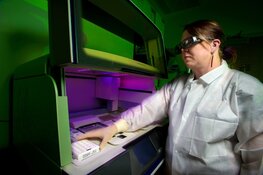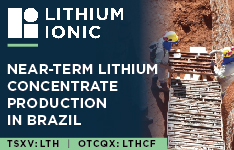If Biomea Fusion Inc.'s (BMEA:NASDAQ) diabetes drug proves effective in regenerating or preserving beta cells, "it could capture a significant share of the diabetes market, given the large target population globally," D. Boral Capital Analyst Jason Kolbert wrote in an updated research note on January 10.
"With current treatments focusing primarily on symptom management rather than addressing the underlying beta cell dysfunction, Biomea’s drug would meet a critical unmet need, particularly for both type 1 and type 2 diabetes patients," wrote Kolbert, who rated the stock Buy with a US$128 per share target price, a nearly 3,000% increase from its price when the note was published.
"If successful, the drug could potentially secure a third of the market, translating to billions in annual revenue, especially if it offers long-term disease-modifying effects," Kolbert noted.
Kolbert said the company has unveiled new preclinical data showing the potent synergy of icovamenib, a covalent menin inhibitor, with semaglutide, a GLP-1 receptor agonist, in treating type 2 diabetes.
"The combination demonstrated remarkable metabolic benefits, including superior glycemic control, enhanced beta-cell function, significant body weight reduction, and improved lean muscle mass," he wrote. "These findings not only underscore the potential for icovamenib to amplify GLP-1-based therapies but also highlight its promise as a disease-modifying agent."
'Results Were Striking'
Biomea Fusion's preclinical study evaluated the effects of icovamenib in combination with semaglutide on key metabolic markers in Zucker Diabetic Fatty rats, a well-established model for type 2 diabetes, Kolbert noted.
"The results were striking: The combination therapy reduced fasting blood glucose by 60% and HbA1c by over 1% compared to semaglutide alone, while enhancing insulin secretion as evidenced by a 50% reduction in glucose AUC during OGTT," he wrote. "Importantly, the combination therapy also improved insulin resistance (HOMA-IR reduced by 75%) and beta-cell function (HOMA-B)."
The combination therapy also yielded a 11.5% reduction in body weight and a 43% increase in lean muscle mass compared to semaglutide monotherapy, suggesting a unique therapeutic profile that addresses both glycemic control and metabolic health, critical for managing type 2 diabetes and its associated complications, Kolbert wrote.
Biomea Fusion's Chief Medical Officer, Juan Pablo Frias, "emphasized the potential of icovamenib to not only enhance the efficacy of GLP-1 therapies but also reduce the required dosage, potentially mitigating side effects and improving patient adherence," the analyst noted. "This breakthrough positions icovamenib as a transformative agent in the diabetes landscape, with clinical trials expected to validate these findings in human populations."
More updates on icovamenib's clinical progress and potential will be presented at the J.P. Morgan Conference on January 13–15, 2025, Kolbert said.
Potential to Change Treatment Paradigm
For the firm's valuation of the stock, Kolbert said its model is based on BMF-219 in diabetes.
"We apply a Probability of Success factor of just 10% as we are in the early phases (P1/2) of development and for conservatism, as the diabetes market is so large that even the smallest chance of success translates into very large projected valuations," Kolbert wrote.
The product has the potential to change the treatment paradigm of the largest therapeutic category in the world, Diabetes, the analyst wrote.
"We can parade out lots of charts and statistical analyses that review the probabilities associated with drug development (and we do provide such in this report), but the reality is that safety is the number one reason why most therapeutics fail," Kolbert said. "We have examined the pre-clinical and clinical safety record for BMF-219 and find it to be very clean.'"
| Want to be the first to know about interesting Biotechnology / Pharmaceuticals investment ideas? Sign up to receive the FREE Streetwise Reports' newsletter. | Subscribe |












































